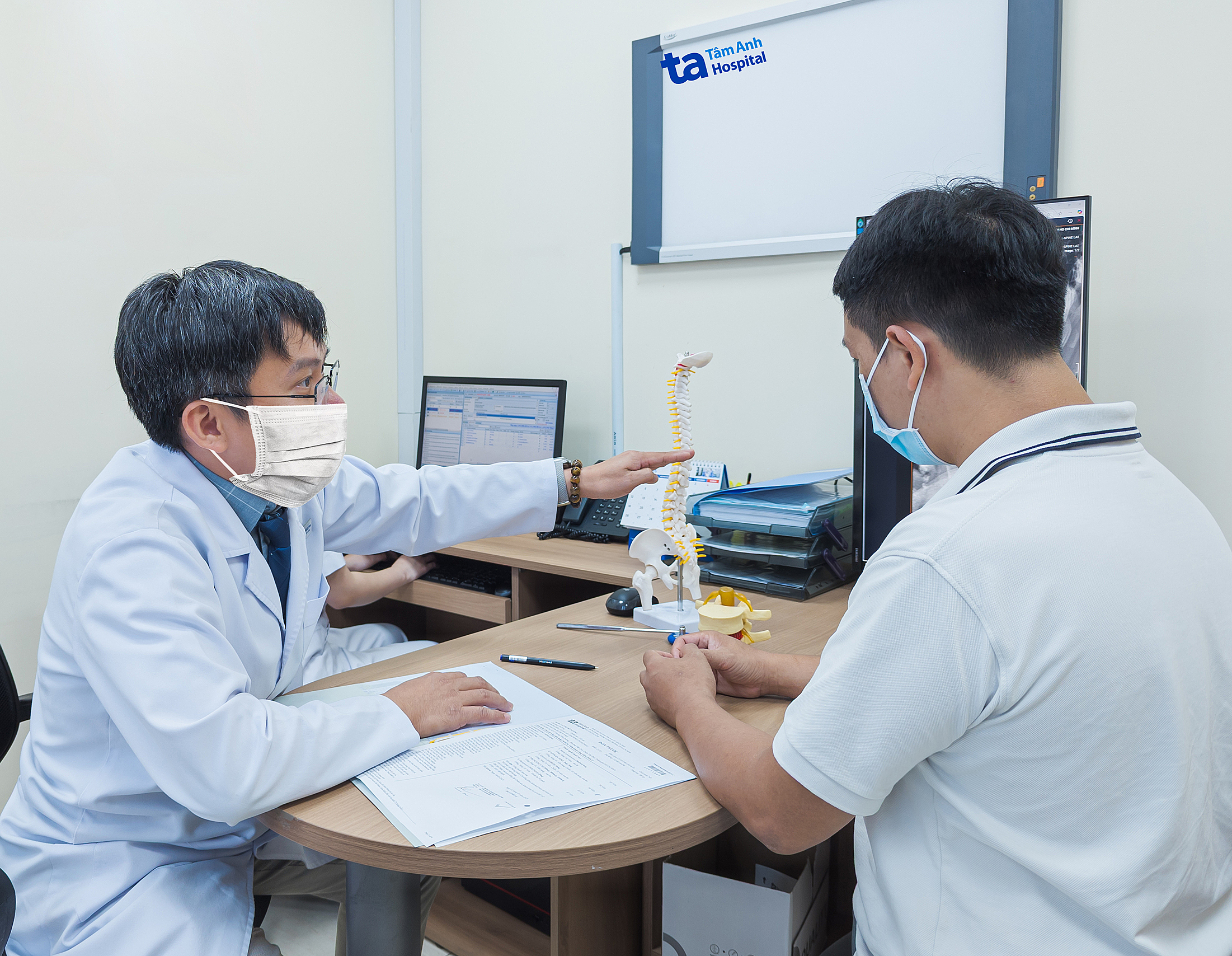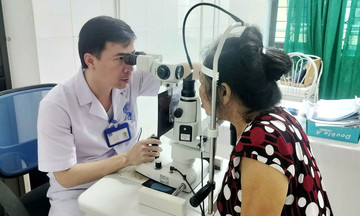Intervertebral discs cushion the vertebrae in the spine. When a disc slips out of place due to factors like accidents, improper lifting, or spinal degeneration, it can compress the sciatic nerve, causing pain along its pathway. This condition is known as sciatica. The pain can originate in the lower back, radiating through the hips and buttocks and/or down the leg. It can also cause muscle weakness in the leg and foot, leading to numbness, tingling, or a pins-and-needles sensation.
Dr. Vu Ngoc Bao Quynh from the Spine Department at Tam Anh General Hospital in Ho Chi Minh City explains that most sciatica cases improve significantly, and even fully recover, with proper treatment. Depending on the patient's condition, doctors may recommend one or a combination of the following methods.
Medication
Doctors often prescribe oral pain relievers, anti-inflammatory drugs, and anticonvulsants for sciatica caused by a herniated disc. Patients should rest adequately and apply hot or cold compresses for a maximum of 20 minutes, 3-4 times a day.
 |
Dr. Quynh explains a patient's spinal condition. Photo: Hospital provided |
Dr. Quynh explains a patient's spinal condition. Photo: Hospital provided
Physical therapy
Patients may need to rest more and reduce physical activity when experiencing pain. However, prolonged bed rest should be avoided as it can stiffen the joints and worsen the condition. Depending on the individual's condition, doctors or physical therapists design tailored exercises to strengthen the spine and muscles in the lower back, abdomen, buttocks, and hips. These exercises also stretch and improve flexibility in stiff tendons and muscles, and boost the body's metabolism.
Epidural steroid injections
When injected, steroids disperse to nerve endings and other tissues, controlling the inflammatory response around the sciatic nerve and reducing immune system activity to limit the production of inflammatory cells. This provides rapid pain relief, allowing patients to participate in physical therapy more comfortably. The effectiveness of this treatment varies. Some patients experience immediate and long-lasting relief, while others only notice improvement after a few weeks or months.
 |
A patient engages in rehabilitation exercises to address back pain. Photo: Hospital provided |
A patient engages in rehabilitation exercises to address back pain. Photo: Hospital provided
According to Dr. Quynh, if these methods are ineffective or the condition worsens, surgery becomes the last resort to relieve pain, restore mobility, and prevent serious complications that can severely impact quality of life.
Currently, microdiscectomy is a common surgical procedure for treating sciatica caused by a herniated disc. This procedure involves removing a small portion of the vertebral bone to better access the nerve root or effectively relieve nerve pressure. It is a minimally invasive surgery performed through a very small incision using dilators and advanced microscopes like the Zeiss Kinevo 900, which provides 20-25x magnification. This allows surgeons to clearly visualize small and deep structures within the spine, enhancing precision, minimizing damage, and resulting in less pain, blood loss, and faster recovery for patients.
Typically, at Tam Anh General Hospital in Ho Chi Minh City, patients can walk on the first day after surgery and are discharged 2-3 days later.
Phi Hong
| Readers can submit questions about musculoskeletal diseases here for doctors to answer. |












